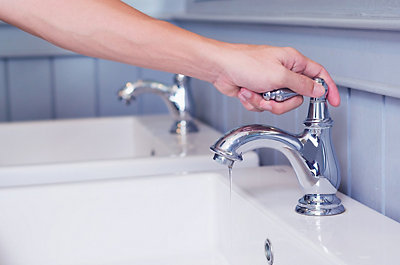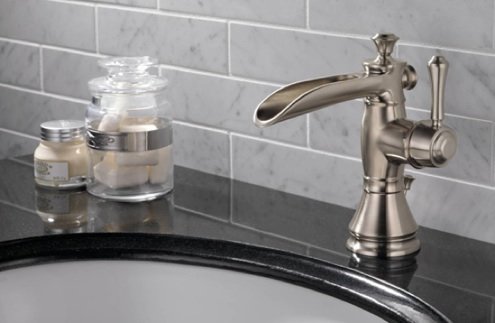Uncovering the Importance of Fixing a Faulty Faucet
Uncovering the Importance of Fixing a Faulty Faucet
Blog Article
How do you feel with regards to Why It's Important to Fix Leaky Faucets?

Leaking taps may seem like a small inconvenience, yet their influence surpasses just the inconvenience of the audio. From drainage to sustaining unnecessary financial expenses and health and wellness dangers, neglecting a dripping faucet can bring about numerous effects. In this post, we'll delve into why it's critical to address this typical house problem quickly and successfully.
Waste of Water
Ecological Influence
Trickling faucets add substantially to water wastage. According to the Environmental Protection Agency (EPA), a single tap leaking at one drip per secondly can lose more than 3,000 gallons of water annually. This not only stress water sources however likewise influences ecological communities and wild animals based on them.
Financial Expenses
Enhanced Water Costs
Past the environmental influence, leaking taps can inflate water costs substantially. The collected waste gradually equates right into higher utility expenses, which could have been avoided with timely fixings.
Possible Residential Or Commercial Property Damage
Moreover, prolonged trickling can cause harm to fixtures and surfaces bordering the faucet. Water buildup can create discoloration, rust, and even architectural issues if left neglected, causing added repair service prices.
Health Worries
Mold and Mold Development
The consistent visibility of wetness from a dripping tap develops an ideal environment for mold and mildew growth. These fungis not just endanger indoor air high quality however also pose health dangers, specifically for individuals with respiratory system conditions or allergies.
Waterborne Illness
Stagnant water in leaking faucets can become a breeding ground for bacteria and other pathogens, increasing the threat of waterborne conditions. Impurities such as Legionella germs prosper in stagnant water, potentially leading to serious ailments when consumed or breathed in.
DIY vs. Professional Fixing
Benefits and drawbacks of DIY Repair
While some might try to take care of a leaking faucet themselves, DIY fixings come with their own collection of difficulties. Without correct knowledge and tools, DIY attempts can worsen the concern or lead to incomplete repair work, extending the trouble.
Advantages of Working With a Specialist Plumber
Hiring an expert plumber makes sure that the underlying source of the trickling tap is attended to successfully. Plumbing professionals have the expertise and tools to detect and fix faucet issues successfully, conserving time and reducing the threat of additional damage.
Step-by-Step Overview to Dealing With a Dripping Faucet
Tools Called for
Before attempting to take care of a leaking faucet, collect the necessary tools, consisting of an adjustable wrench, screwdrivers, substitute components (such as washing machines or cartridges), and plumber's tape.
Usual Faucet Issues and Their Solutions
Determine the sort of faucet and the particular issue triggering the drip. Usual problems include damaged washing machines, corroded valve seats, or damaged O-rings. Describe producer directions or on the internet tutorials for step-by-step guidance on repair work.
Preventive Measures
Routine Maintenance Tips
To avoid dripping faucets, perform regular upkeep such as cleaning up aerators, examining for leaks, and changing damaged components quickly. Additionally, consider installing water-saving tools or updating to much more reliable components.
Value of Prompt Repair Works
Dealing with dripping taps as quickly as they're observed protects against further water wastefulness and prospective damage, eventually conserving both water and money in the long run.
Influence On Residential Or Commercial Property Worth
Understanding of Well-Maintained Property
Preserving a residential or commercial property in good condition, including addressing maintenance issues like trickling faucets, improves its perceived value and desirability among potential customers or renters.
Influence on Resale Worth
Residences with well-kept plumbing components, including faucets, command higher resale values in the real estate market. Attending to leaking faucets can add to a favorable impact during building assessments and settlements.
Ecological Obligation
Specific Contribution to Preservation
Taking responsibility for dealing with dripping taps straightens with wider efforts toward water preservation and ecological sustainability. Every person's activities jointly make a considerable impact on protecting valuable sources.
Lasting Living Practices
By prioritizing timely repair work and embracing water-saving practices, individuals add to sustainable living practices that profit both present and future generations.
Verdict
Resolving a trickling faucet surpasses mere ease; it's a crucial action towards conserving water, decreasing monetary prices, and securing health and residential or commercial property. Whether with do it yourself repair work or professional assistance, doing something about it to take care of dripping faucets is a tiny yet impactful way to advertise liable stewardship of sources and add to a healthier, more lasting future.
Why Are My Faucets Dripping (And Can I Fix it Myself)?
Causes of a Dripping or Leaking Faucet
Whether you’re hearing drops of water falling and hitting a sink, or noticing water ooze out from the base of the spout, you shouldn’t ignore a dripping or leaking faucet. And, the good news is, sometimes you can fix the problem yourself.
In this article, we’ll review a few common causes of dripping and leaky. We’ll also walk you through some basic ways to find the problem and handle it without calling anyone — and let you know when to call in a pro.
But, no matter what the cause, or whether you can handle it on your own, the sooner you address it, the better.
Each drip may be a tiny amount of water. But, they all add up quickly. According to the U.S. Geological Survey, one faucet losing one drop every 20 seconds — five a minute — wastes around a liter of water every day, and 173 gallons a year.
Add in more than one in your house, and it’s a lot of water to waste. So, we’ll help you get to the bottom of things quickly.
Four Reasons Your Faucet May Be Dripping
Aerator is Damaged or Unseated Valve Seat is Corroded O Ring is Loose or Worn Out Part of the Assembly is Loose Aerator is Damaged or Unseated
If you unscrew the end of your faucet, you’ll find the aerator. It’s the little stem piece with a screen on it that shuts off the water circulation.
If it’s damaged, or if it’s not sitting right, it will allow water to pass through.
Valve Seat is Corroded
Next is the valve seat, which is connected to the washer. If the washer wasn’t in place correctly, then it could have ground against the seat. Over time, this damages the valve seat.
The problem could also be corrosion: Over time, the part has worn out, and it’s now allowing water to pass through.
O Ring is Loose or Worn Out
Since the o ring is only a small rubber gasket, it’s a common reason why the faucet is dripping. You’ll find it at the base of the faucet, and it’s there to keep water from coming out where it’s not supposed to.
However, it’s common for the o ring to wear out over time. When it does, you’ll notice a drip.
Part of the Assembly is Loose
So far, we’ve looked at a few small, specific parts. But, the problem could be anywhere in the assembly if something’s out of place.
Even if a part isn’t damaged, over time, it may have become loose or dislodged. It could be the parts we mentioned, or the aerator at the tip of the faucet, the stem itself,
Can I Fix a Leaky Faucet Myself?
Depending on the problem, and how handy you are, there’s a chance you can fix a leaky faucet without calling a professional. But, you do run the risk of making the problem worse.
If it’s a small drip, you can certainly try a few troubleshooting tactics. We’ll walk you through them in a moment.
But, no matter what, your first step should be shutting off the water coming into the faucet. You should find a shutoff valve under the sink on the pipes leading to it. Turn each one clockwise until they close tightly.
Next, make sure you have the right tools for whatever you’re attempting. It’s tempting to make do with what you have. But, you need the right ones for a reason: You’re often dealing with small parts that can break if you handle them carelessly.
If you’re feeling confident, here are some places to start.
Items Near the Tip of the Faucet
A few of the parts we mentioned — particularly the valve seat and washer — are located at the tip of the faucet where the water comes out. They’re easy to access, making it a good place to start.
Check the O Ring
To check the o ring, you’ll need to take off the spout at the base. It’s easiest on kitchen sinks with long spouts, versus the smaller, bulkier base on most bathroom sinks.
Either way, this can be tricky, so do it carefully and don’t force anything. If it’s not coming right off, you’re much better off calling in a pro than possibly breaking something.
For a kitchen sink, there’s usually a nut or coupling assembly at the base of the spout. These often slide off easily without using any tools.
Once you’ve disassembled those parts, gently but forcefully twist off the spout.
Then, you can see the o rings. There should be two of the rubber gaskets on the base. If they look worn or damaged, replace them, and see if that solves the problem.

We had been made aware of that article on Leaky Faucets: Why They Happen & What to Do About Them from a buddy on our other blog. Liked our blog posting? Please quickly share it. Let someone else discover it. Bless you for your time. Come back soon.
Report this page